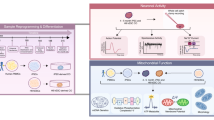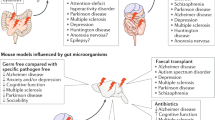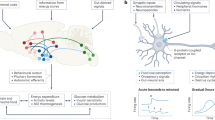Abstract
This study investigated the impact of different bacterial populations on the biomolecular structures of cerebral organoids (COs) at various levels. COs were co-cultured with non-pathogenic (NM) and pathogenic (PM) bacterial populations. PM reduced the number of TUJ1+ neurons and disrupted the intact structure of COs. In addition, PM was found to induce changes in the transcript profile of COs, including a decrease in the activity of the glycolysis pathway and an increase in the pentose phosphate pathway, leading to deterioration in cellular energy metabolism, which is linked to neurodegenerative diseases. Proteomic analysis revealed a unique cluster of proteins in COs. PM exposure upregulated proteins related to neurological diseases, consistent with RNA-seq data. Communication between bacteria and neural cells was demonstrated using 18O-stable isotope labeling (SIL)-based metabolic flux analysis. COs showed higher 18O-enrichment of TCA cycle intermediates when co-cultured with NM and PM, indicating increased oxidative phosphorylation activity upon exposure to bacteria. This study provides a useful platform to monitor metabolic signals and communication between microbiotas and human brain cells. The findings suggest that pathogenic bacteria release metabolites that alter biomolecular structures in brain organoids, potentially contributing to neurodegenerative diseases.
This is a preview of subscription content, access via your institution
Access options
Subscribe to this journal
Receive 12 print issues and online access
$259.00 per year
only $21.58 per issue
Buy this article
- Purchase on SpringerLink
- Instant access to full article PDF
Prices may be subject to local taxes which are calculated during checkout






Similar content being viewed by others
Data availability
The data that support the findings of this study are available from the authors on reasonable request, see author contributions for specific data sets.
References
Heijtz RD, Wang D, Anuar F, Qian Y, Björkholm B, Samuelsson A, et al. Normal gut microbiota modulates brain development and behavior. Proc Natl Acad Sci USA. 2011;108:3047–52. https://doi.org/10.1073/pnas.1010529108
O’Mahony SM, Marchesi JR, Scully P, Codling C, Ceolho A-M, Quigley EMM, et al. Early life stress alters behavior, immunity, and microbiota in rats: implications for irritable bowel syndrome and psychiatric illnesses. Biol Psychiatry. 2009;65:263–7. https://doi.org/10.1016/j.biopsych.2008.06.026
Gareau MG, Wine E, Rodrigues DM, Cho JH, Whary MT, Philpott DJ, et al. Bacterial infection causes stress-induced memory dysfunction in mice. Curr Mol Med. 2008;8:274–81. https://doi.org/10.1136/gut.2009.202515
David LA, Maurice CF, Carmody RN, Gootenberg DB, Button JE, Wolfe BE, et al. Diet rapidly and reproducibly alters the human gut microbiome. Nature. 2013;505:559–63. https://doi.org/10.1038/nature12820
Mazzoli R, Pessione E. The neuro-endocrinological role of microbial glutamate and GABA signaling. Front Microbiol. 2016;7:1934 https://doi.org/10.3389/fmicb.2016.01934
Buffington SA, Di Prisco GV, Auchtung TA, Ajami NJ, Petrosino JF, Costa-Mattioli M. Microbial reconstitution reverses maternal diet-induced social and synaptic deficits in offspring. Cell. 2016;165:1762–75. https://doi.org/10.1016/j.cell.2016.06.001
Zhang Y, Zhang HX, Lu YY, Yang C, Fan YX, Dong YL, et al. Estrogen induces endothelial cell senescence via downregulation of Sirt6. Neuroscience. 2017;371:207–20. https://doi.org/10.1016/j.neuroscience.2017.12.010
Stachowicz A, Olszanecki R, Suski M, Grabowski K, Basta-Kaim A, Korbut R. Depressive-like behavior, its sensitivity to agomelatine and changes in brain redox balance induced by olanzapine co-treatment with fluoxetine in rats subjected to chronic mild stress. Brain Behav Immun. 2016;51:144–53. https://doi.org/10.1016/j.bbi.2015.08.022
Han X, Chen M, Wang F, Windrem M, Wang S, Shanz S, et al. Forebrain engraftment by human glial progenitor cells enhances synaptic plasticity and learning in adult mice. Neuroscience. 2015;298:221–92. https://doi.org/10.1016/j.neuroscience.2015.04.051
Schlaermann P, Toelle B, Berger H, Schmidt SC, Glanemann M, Ordemann J, et al. A novel human gastric primary cell culture system for modelling Helicobacter pylori infection in vitro. Gut. 2016;65:202–13. https://doi.org/10.1136/gutjnl-2014-308500
Forbester JL, Goulding D, Vallier L, Hannan N, Hale C, Pickard D, et al. Interaction of Salmonella enterica Serovar Typhimurium with intestinal organoids derived from human induced pluripotent stem cells. Infect Immun. 2015;83:2926–34. https://doi.org/10.1128/IAI.00037-15
Karve S, Pradhan S, Ward DV, Weiss AA. Intestinal organoids model human responses to infection by commensal and Shiga toxin producing Escherichia coli. PLoS ONE. 2017;12:e0178966. https://doi.org/10.1371/journal.pone.0178966
Finkbeiner S, Zeng X-L, Utama B, Atmar RL, Shroyer NF, Estes MK. Stem cell-derived human intestinal organoids as an infection model for rotaviruses. mBio. 2012;3:e00159-12. https://doi.org/10.1128/mBio.00159-12
Leslie JL, Huang S, Opp JS, Nagy MS, Kobayashi M, Young VB, et al. Persistence and toxin production by Clostridium difficile within human intestinal organoids result in disruption of epithelial paracellular barrier function. Infect Immun. 2015;83:138–45. https://doi.org/10.1128/IAI.02561-14
Heo I, Dutta D, Schaefer DA, Iakobachvili N, Artegiani B, et al. Modelling Cryptosporidium infection in human small intestinal and lung organoids. Nat Microbiol. 2018;3:814–23. https://doi.org/10.1038/s41564-018-0177-8
Li Z, Lai J, Zhang P, Ding J, Jiang J, Liu C, et al. Multi-omics analyses of serum metabolome, gut microbiome and brain function reveal dysregulated microbiota-gut-brain axis in bipolar depression. Mol Psychiatry. 2022;27:4123–35. https://doi.org/10.1038/s41380-022-01569-9
Liang X, Fu Y, Cao W-T, Wang Z, Zhang K, Jiang Z, et al. Gut microbiome, cognitive function and brain structure: a multi-omics integration analysis. Transl Neurodegener. 2022;11:49. https://doi.org/10.1186/s40035-022-00323-z
Lai Y, Liu C-W, Yang Y, Hsiao Y-C, Ru H, Lu K. High-coverage metabolomics uncovers microbiota-driven biochemical landscape of interorgan transport and gut-brain communication in mice. Nat Commun. 2021;12:6000. https://doi.org/10.1038/s41467-021-26209-8
Xie J, Zhong Q, Wu W-T, Chen JJ. Multi-omics data reveals the important role of glycerophospholipid metabolism in the crosstalk between gut and brain in depression. J Transl Med. 2023;21:93. https://doi.org/10.1186/s12967-023-03942-w
Zhao H, Zhou X, Song Y, Zhao W, Sun Z, Zhu J, et al. Multi-omics analyses identify gut microbiota-fecal metabolites-brain-cognition pathways in the Alzheimer’s disease continuum. Alzheimers Res Ther. 2025;17:36 https://doi.org/10.1186/s13195-025-01683-0
Liu Y, Wang H, Gui S, Zheng B, Pu J, Zheng P, et al. Proteomics analysis of the gut-brain axis in a gut microbiota-dysbiosis model of depression. Transl Psychiatry. 2021;11:568. https://doi.org/10.1038/s41398-021-01689-w
Stingl C, Söderquist M, Karlsson O, Boren M, Luider TM. Uncovering effects of ex vivo protease activity during proteomics and peptidomics sample extraction in rat brain tissue by oxygen-18 labeling. J Proteome Res. 2014;13:2807–17. https://doi.org/10.1021/pr401232e
Nemutlu E, Zhang S, Gupta A, juranic NO, Macura SI, Terzic A, et al. Dynamic phosphometabolomic profiling of human tissues and transgenic models by 18O-assisted 31P NMR and mass spectrometry. Physiol Genomics. 2012;44:386–402. https://doi.org/10.1152/physiolgenomics.00152.2011
Lancaster MA, Knoblich JA. Generation of cerebral organoids from human pluripotent stem cells. Nat Protoc. 2014;9:2329–40. https://doi.org/10.1038/nprot.2014.158
Isik M, Eylem CC, Haciefendioglu T, Yildirim E, Sari B, Nemutlu E, et al. Mechanically robust hybrid hydrogels of photo-crosslinkable gelatin and laminin-mimetic peptide amphiphiles for neural induction. Biomater Sci. 2021;9:8270–84. https://doi.org/10.1039/D1BM01350E
Eylem CC, Yilmaz M, Derkus B, Nemutlu E, Camci C, Yilmaz E, et al. Untargeted multi-omic analysis of colorectal cancer-specific exosomes reveals joint pathways of colorectal cancer in both clinical samples and cell culture. Cancer Lett. 2020;469:186–94. https://doi.org/10.1016/j.canlet.2019.10.038
Eylem CC, Baysal I, Erikci A, Yabanoglu-Ciftci S, Zhang S, Kir S, et al. Gas chromatography-mass spectrometry based 18O stable isotope labeling of Krebs cycle intermediates. Anal Chim Acta. 2021;1154:338325. https://doi.org/10.1016/j.aca.2021.338325
Aksu-Menges E, Eylem CC, Nemutlu E, Gizer M, Korkusuz P, Topaloglu H, et al. Reduced mitochondrial fission and impaired energy metabolism in human primary skeletal muscle cells of megaconial congenital muscular dystrophy. Sci Rep. 2021;11:18161. https://doi.org/10.1038/s41598-021-97294-4
Lancaster MA, Renner M, Martin CA, Wenzel D, Bicknell LS, Hurles ME, et al. Cerebral organoids model human brain development and microcephaly. Nature. 2013;501:373–9. https://doi.org/10.1038/nature12517
Tamaki Y, Ross JP, Alipour P, Castonguay CÉ, Li B, Catoire H, et al. Spinal cord extracts of amyotrophic lateral sclerosis spread TDP-43 pathology in cerebral organoids. PLoS Genet. 2023;19:e1010606. https://doi.org/10.1371/journal.pgen.1010606
Sarubbo F, Cavallucci V, Pani G. The influence of gut microbiota on neurogenesis: evidence and hopes. Cells. 2022;11:382. https://doi.org/10.3390/cells11030382
Conover JC, Shook BA. Aging of the subventricular zone neural stem cell niche. Aging Dis. 2011;2:49–63. https://doi.org/10.1016/j.neuroscience.2010.11.032
Saglam-Metiner P, Devamoglu U, Filiz Y, Akbari S, Beceren S, Goker B, et al. Spatio-temporal dynamics enhance cellular diversity, neuronal function and further maturation of human cerebral organoids. Commun Biol. 2023;6:173. https://doi.org/10.1038/s42003-023-04547-1
Kumar V, Kim S-H, Bishayee K. Dysfunctional glucose metabolism in Alzheimer’s disease onset and potential pharmacological interventions. Int J Mol Sci. 2023;23:9540.
Ghosh A, Cheung YY, Mansfield BC, Chou JY. Brain contains a functional glucose-6-phosphatase complex capable of endogenous glucose production. J Biol Chem. 2005;280:11114–9. https://doi.org/10.1074/jbc.M410894200
Tu D, Gao Y, Yang R, Hong J-S, Gao H-M. The pentose phosphate pathway regulates chronic neuroinflammation and dopaminergic neurodegeneration. J Neuroinflammation. 2019;16:255. https://doi.org/10.1186/s12974-019-1659-1
Chua XY, Chong JR, Cheng AL. Elevation of inactive cleaved annexin A1 in the neocortex is associated with amyloid, inflammatory and apoptotic markers in neurodegenerative dementias. Neurochem Int. 2021;152:105251. https://doi.org/10.1016/j.neuint.2021.105251
Muraoka S, DeLeo AM, Sethi M, Yukawa-Takamatsu K, Yang Z, Ko J, et al. Proteomic and biological profiling of extracellular vesicles from Alzheimer’s disease human brain tissues. Alzheimer’s Dementia. 2020;16:896–907. https://doi.org/10.1002/alz.12089
Muraoka S, Jedrychowski MP, Iwahara N. Enrichment of neurodegenerative microglia signature in brain-derived extracellular vesicles isolated from Alzheimer’s disease mouse models. J Proteome Res. 2021;20:1733–43. https://doi.org/10.1021/acs.jproteome.0c00934
Han D, Dong X, Zheng D, Nao J. MiR-124 and the underlying therapeutic promise of neurodegenerative disorders. Front Pharmacol. 2019;10:1555. https://doi.org/10.3389/fphar.2019.01555
Mendez-Lopez I, Bianco-Luquin I, de Gordoa JS-R, Urdanoz-Casado A, Roldan M, Acha B, et al. Hippocampal LMNA gene expression is increased in late-stage Alzheimer’s disease. Int J Mol Sci. 2019;20:878. https://doi.org/10.3390/ijms20040878
Kim JH, Franck J, Kang T, Heinsen H, Ravid R, Ferrer I, et al. Proteome-wide characterization of signalling interactions in the hippocampal CA4/DG subfield of patients with Alzheimer’s disease. Sci Rep. 2015;5:11138. https://doi.org/10.1038/srep11138
Zhu Y, Li Y, Zhang Q, Song Y, Wang L, Zhu Z. Interactions between intestinal microbiota and neural mitochondria: a new perspective on communicating pathway from gut to brain. Front Microbiol. 2022;13:798917. https://doi.org/10.3389/fmicb.2022.798917
Alves TC, Pongratz RL, Zhao X, Yarborough O, Sereda S, Shirihai O, et al. Integrated, step-wise, mass-isotopomeric flux analysis of the TCA cycle. Cell Metab. 2015;22:936–47. https://doi.org/10.1016/j.cmet.2015.08.021
Cheng F, Yuan Q, Yang J, Liu H. The prognostic value of serum neuron-specific enolase in traumatic brain injury: systematic review and meta-analysis. PLoS ONE. 2014;9:e106680. https://doi.org/10.1371/journal.pone.0106680
Peng Q, Chen W, Yan E, Deng Y, Xu Z, Wang S, et al. The relationship between neuron-specific enolase and clinical outcomes in patients undergoing mechanical thrombectomy. Neuropsychiatric Dis Treat. 2023;19:709–19. https://doi.org/10.2147/NDT.S400925
Acknowledgements
This work was financially funded by the Scientific and Technological Research Council of Turkey (TUBITAK, grant number: 219S661) and Ankara University - Scientific Research Projects Coordination Unit (grant number: TSA-2024-3217). B.D. also thanks the Turkish Academy of Science (TUBA) and the Science Academy (Istanbul) for their support. The authors thank the NEUROM Cell Culture Unit for their kind help in MEA study.
Author information
Authors and Affiliations
Contributions
BD developed the concept, received the grant, and supervised this study. BD, MI, and EN designed the experiments. MI, CCE, KE-G performed the experiments. BD, EN, PA-C, and EBM cured and analyzed the data. YY provided cell lines and commented on the manuscript. BD wrote the manuscript. AC, EE, and ARM edited and commented on the manuscript. All authors approved the final version of the manuscript.
Corresponding author
Ethics declarations
Competing interests
The authors declare no competing interests.
Additional information
Publisher’s note Springer Nature remains neutral with regard to jurisdictional claims in published maps and institutional affiliations.
Rights and permissions
Springer Nature or its licensor (e.g. a society or other partner) holds exclusive rights to this article under a publishing agreement with the author(s) or other rightsholder(s); author self-archiving of the accepted manuscript version of this article is solely governed by the terms of such publishing agreement and applicable law.
About this article
Cite this article
Isik, M., Eylem, C.C., Erdogan-Gover, K. et al. Pathogenic microbiota disrupts the intact structure of cerebral organoids by altering energy metabolism. Mol Psychiatry (2025). https://doi.org/10.1038/s41380-025-03152-4
Received:
Revised:
Accepted:
Published:
DOI: https://doi.org/10.1038/s41380-025-03152-4



